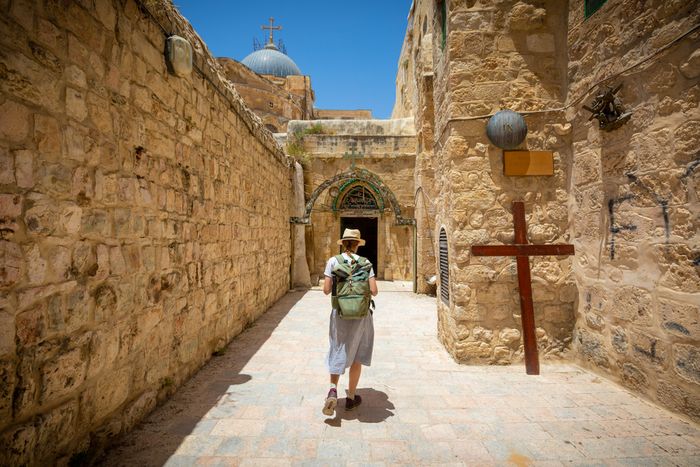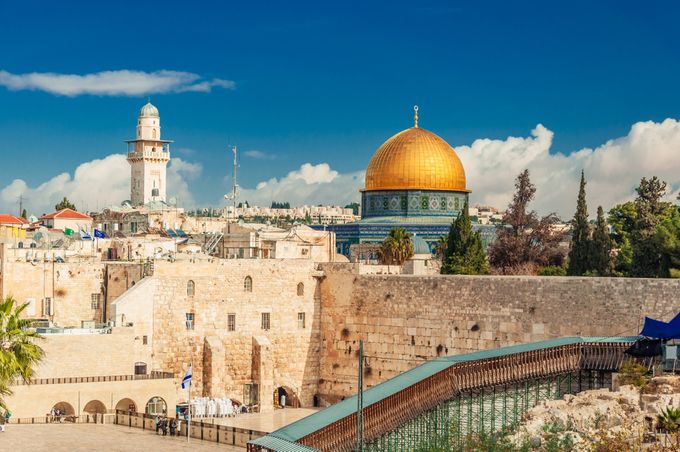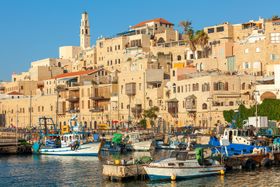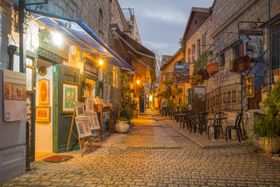Explore the Holy Sites in Jerusalem for Christianity
Explore the Holy Land through the Artza Holy Land blog. A pilgrimage through the country and discover the beauty and culture of the birthplace of Christianity.
Updated April 16, 2024.

Discover the Holy Land's Rich Culture & History in Jerusalem, Israel.
In this series, you will be taken on an immersive journey through the Holy Land. Exploring ancient, biblical, and modern stories, magnificent scenery, flavors, traditions, sites, and most importantly of all - we will introduce you to the people that call this place home. Along the journey, you will meet all of the Israeli artisans and charities that we help support and explore the rich culture, history, and beauty of Israel.
And for those of you who want a fully immersive experience of the land where Jesus walked, our Artza subscription box is designed to do just that. Delivered quarterly, each locally sourced Artza box is packed with gorgeous, handcrafted gifts, foods, local spices, content, stories, scripture, and so much more! Delivered from the Holy Land directly to your home.
Location: Jerusalem, Israel.
Our journey continues through Jerusalem, regarded by many as one of the holiest places in the world for Christians, due to its deep-rooted connections to Jesus. With Jerusalem's rich history and spiritual significance, this holy city has been a place of pilgrimage and worship for Judaism, Christianity, and Islam for centuries.
Top holy sites in Jerusalem, Israel.
1. Church of the Holy Sepulchre: The Church of the Holy Sepulchre is a church situated in the Christian Quarter of the Old City of Jerusalem. According to many traditions, it contains the two holiest sites in Christianity, the site where Jesus was crucified (Golgotha) and Jesus' empty tomb. Although this location is argued by many.
2. Via Dolorosa: The Via Dolorosa is a street in Jerusalem associated with the road Jesus walked on his way to his crucifixion, according to Christian tradition. The name means "Way of Suffering" in Latin, and it is believed to be the path that Jesus walked on the way to his crucifixion. The street is marked by a series of stations, each representing an event in the final journey of Jesus. The Via Dolorosa is a popular site for Christian pilgrimage, and it is one of the holiest places in Jerusalem for Christians.
How many stations does the Via Dolorosa have?
There are 14 stations in total along the Via Dolorosa: 9 stations of the cross and 5 from the Church of the Holy Sepulcher. The walk begins inside Jerusalem's old city, and the different stations are all marked with plaques.
Where did the Via Dolorosa get its name?
It is said that Jesus carried his own cross and wore a crown of thorns while he walked this route, so the name is fitting.
3. Temple Mount: Temple Mount is a hill in the Old City of Jerusalem that for thousands of years has been acclaimed as a holy site in Judaism, Christianity and Islam alike. The Temple Mount in Jerusalem is considered an important site in Jesus' life because it was the location of the Second Temple, one of the most important Jewish religious and cultural centres of the time.
One notable event recorded in the Gospels was when Jesus challenged the merchants and money changers who were operating inside the Temple, causing a disturbance.
The event is considered significant in the life of Jesus and is often interpreted as an expression of his zeal for the House of God and his commitment to its spiritual purity.
4. Mount of Olives: This hill is considered a sacred site for Christians, as it is believed to be the location where Jesus taught and prayed, and where he will return at the end of time. According to the Gospels, Jesus often visited the Mount of Olives and used it as a place for prayer and contemplation.
It is also the location where Jesus is said to have wept over the city of Jerusalem
This statement, spoken by Jesus as he looked over the city of Jerusalem, expresses his deep sadness and longing for the people to understand the path to peace.
The Mount of Olives is believed by many Christians to be the location where Jesus ascended into heaven after his resurrection this event is considered one of the most important in the Christian faith.
The quote serves as a reminder of Jesus' promise to return and reinforces the idea of his ongoing presence in the world.
5. The Western Wall: The Western Wall, also known as the "Kotel" and the "Wailing Wall", is considered to be an extremely significant site in Christianity and Jesus because it is part of the Temple Mount, which was the location of the Jewish Temple in Jerusalem. The wall is the only remaining structure of the retaining walls of the Temple of Jerusalem - the holiest site in ancient Judaism. In Christian tradition, it is believed that Jesus himself visited the Temple and taught there. The Western Wall is significant for Christianity and Jesus because it connects modern Christians with the history and tradition of their faith, and serves as a powerful reminder of the central role that Jerusalem played in the life and ministry of Jesus.
Why is the Western Wall known as the 'Kotel' & 'Wailing Wall'?
The Western Wall, also known as the Wailing Wall, is called the Kotel in Hebrew as the word "Kotel" means "wall" in Hebrew. For centuries, Jews have come to the wall to mourn the destruction of the Second Temple.
6. Dome of Rock: The Dome Of Rock is significant in Christianity because it is believed to be the site where King Solomon built his Temple, and later where the Second Temple was located. In some Christian traditions, the Second Temple is also associated with the site of the Crucifixion and the Resurrection of Jesus.
Additionally, the location is considered to be sacred by Christians as it is considered the place where Abraham prepared to sacrifice Isaac, as described in the Hebrew Bible. As such, the Dome of the Rock and the surrounding area have a rich religious history and hold significant spiritual value for Christians.
The quote demonstrates Abraham's faith and trust in God's promise, even in the face of a difficult and testing situation. It is often cited as an example of unwavering faith and devotion to God.
As we come to the close of our tenth Holy Land Artza Blog which takes you on a journey through Israel with us, we want to express our deepest gratitude for your participation. It has been a privilege to share with you the beauty, culture and traditions of this land that holds such a special place in our hearts thus far, and we are so excited for what is to come! For those who seek a deeper connection to the Holy Land, our Artza subscription boxes are the next best thing to actually travelling to Israel, it is the best way to bring the Holy Land to your doorstep. Each Artza box is sent to you from a different region in Israel, and it is packed with up to eight stunning hand-crafted gifts, local foods, spices, art, scripture, ceramics and so much more - each carefully chosen from the local artisans and charities of that specific region - with the aim of bringing the Holy Land to life in the most meaningful and immersive way possible. This is your chance to experience the beauty of the Holy Land and to support the people of Israel. We look forward to welcoming you back soon and providing you with the next Holy Land Artza Blog, and of course, welcome to ISRAEL!







